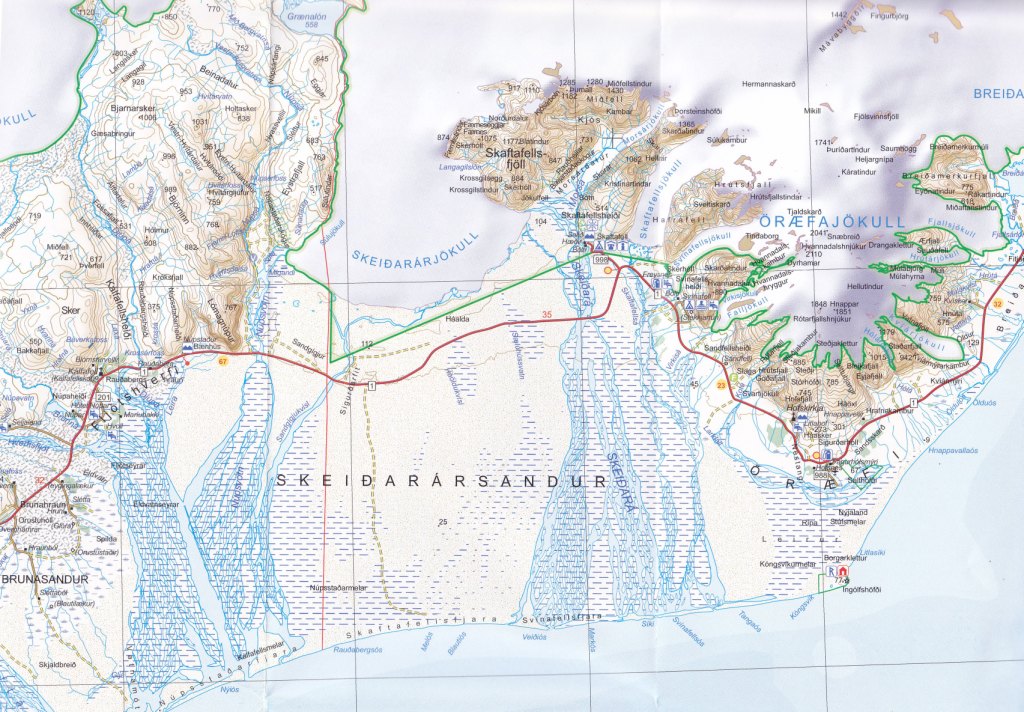|
It's out on its own in the
North Atlantic, touching the Arctic Circle; mountainous,
glacier-clad, thinly populated -- but heaving with geological
wonder, ancient European history, an enviably vigorous culture,
sheep -- and fish.
We travelled round Iceland's 1500-kilometer perimeter; camping --
and with the occasional stay in bed-and-breakfasts -- seeking
wildlife amid breath-taking geology, never far from the results of
volcanic upheaval.
Iceland has no more than 360,000 inhabitants, descendants of
refugees from medieval Norway and of wandering Celts from Ireland.
We arrived on Iceland's international airline, were bussed right to
our first-night door in Reykjavik, spent the first couple of days in
grey rain in Iceland's west, then drove into warmth and sunshine in
the south- and north-east. Empty new roads ran through 7-kilometer
mountain tunnels and (if you're as fortunate as we were in early
June) enjoyed warm, sunny weather a stone's-throw from the Arctic
Circle.
In Reykjavik we saw the new Harpa, the big new cultural centre built
entirely of glass panels. There are six universities in Iceland,
several orchestras in Reykjavik alone and many public art
installations. Still under the cloud of 2008's economic collapse in
North America and the rest of the economic world, we were left
wondering quite how the Icelanders do all this. (They voted, of
course, against allowing their government to bail out their banks to
solve Iceland's own over-spending spree).
It was 23 degrees C at Raufarhofn, in Iceland's far north-east a
kilometer or so from the Arctic Circle. And no biting insects. These
are some of the images we brought back to British Columbia.
|
|

